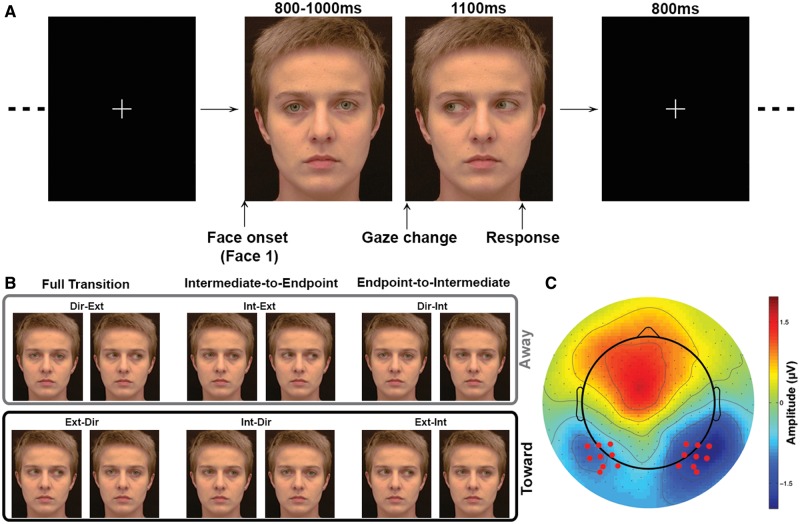Fig. 1.
Methods. (A) Time line for individual trial structure. A first static face is displayed on the screen. Gaze direction in that first face can be direct (illustrated), intermediate or extreme. The first face is then replaced by a second static face, in which the gaze direction, different from gaze direction in the first face, can be direct, intermediate or extreme (illustrated) in order to create apparent gaze motion. Subjects were instructed to respond while the second face was still on screen. (B) Example of the different apparent motion conditions. The light gray box highlights gaze transition made away from the subjects. The dark gray box highlights gaze transition made toward the subjects. (C) Location of the electrodes of interest (red dots). Data illustrated is the average ERPs across conditions at the latency of the N170.

